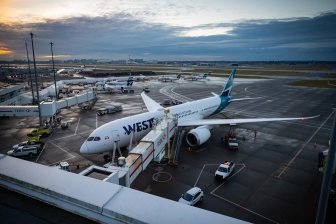Canada’s latest federal budget is betting big on a housing boom, but some in B.C.’s construction industry say a labour shortage could make Ottawa’s housing goals “meaningless.”
Tuesday’s budget sets a target of building 3.87 million new homes by 2031, backed by $8.5 billion in spending on housing initiatives and $55 billion in construction loans modelled off British Columbia’s BC Builds program.
“We now have a plan that’s going to get four million homes across the country built by 2031. That is going to make a huge, huge difference,” Finance Minister Chrystia Freeland told Global News.

Building those homes, however, will require thousands of skilled trades workers, and some in the industry say the bodies simply aren’t there.
“The targets that the governments at every level are setting for us are almost unattainable unless we have all the tools we can use actually at our fingertips,” said Steve Robinson, owner of Pitt Meadows Plumbing & Mechanical and founder of the Future of Work trade show.
Robinson added B.C. was “not even close” to having enough skilled tradespeople to keep up with demand.
They’re concerns echoed by the Independent Contractors and Business Association (ICBA), which said B.C.’s labour shortage is being acutely felt in the construction industry.
ICBA president Chris Gardner said about one in five workers in the industry are over the age of 55 and entering the retirement window.
“Over the next five years, we are going to be losing an awful lot of expertise and experience, and the challenge is we don’t have enough people coming in to replace them,” he said.

The sector has already seen its workforce contract by seven per cent in the last five years, and industry estimates suggest the sector could be short between 6,600 and 17,700 workers by 2033 without a major boost in recruitment and training.
“The challenge is we don’t have enough people coming in to replace them,” Gardner said.
The shortage of skilled tradespeople comes despite a rapid growth in Canada’s population, driven by immigration.
Of the estimated 460,000 people who immigrated to Canada in 2023, just 9,000 worked in the trades.
Gardner said Ottawa has not done enough to target immigrants with trades backgrounds and bridge the gap in the construction labour market.
Federal NDP Leader Jagmeet Singh echoed those comments, saying Ottawa needs to do more to attract immigrants with skills training.

“Some unions are saying the workers can come through us to ensure they are doing the work, so maybe that is an option we can look at.”
Freeland told Global News her government remains confident its ambitious homebuilding program is viable.
“It does take time to build a home, and the challenge is significant, but I also think we have a lot of things in our favour,” she said.
“Homes are being built.”
Robinson, meanwhile, suggested more investment in technology, including industrialized construction to help ease the labour shortage.
He said he’d also like to see technology classes return to high schools to help streamline interested students more quickly into skilled trades.
Timelines on several major B.C. industrial projects may also ease the labour crunch.
Work is essentially complete on both the Trans Mountian pipeline expansion and the Coastal GasLink pipeline.
LNG Canada, with a workforce of 6,500 people, and the Site C Dam, with a workforce of more than 2,700 people, are both aiming for completion in 2025, while the Broadway Subway, which employs 900 skilled workers, is due for completion the following year.
More on Money
© 2024 Global News, a division of Corus Entertainment Inc.


